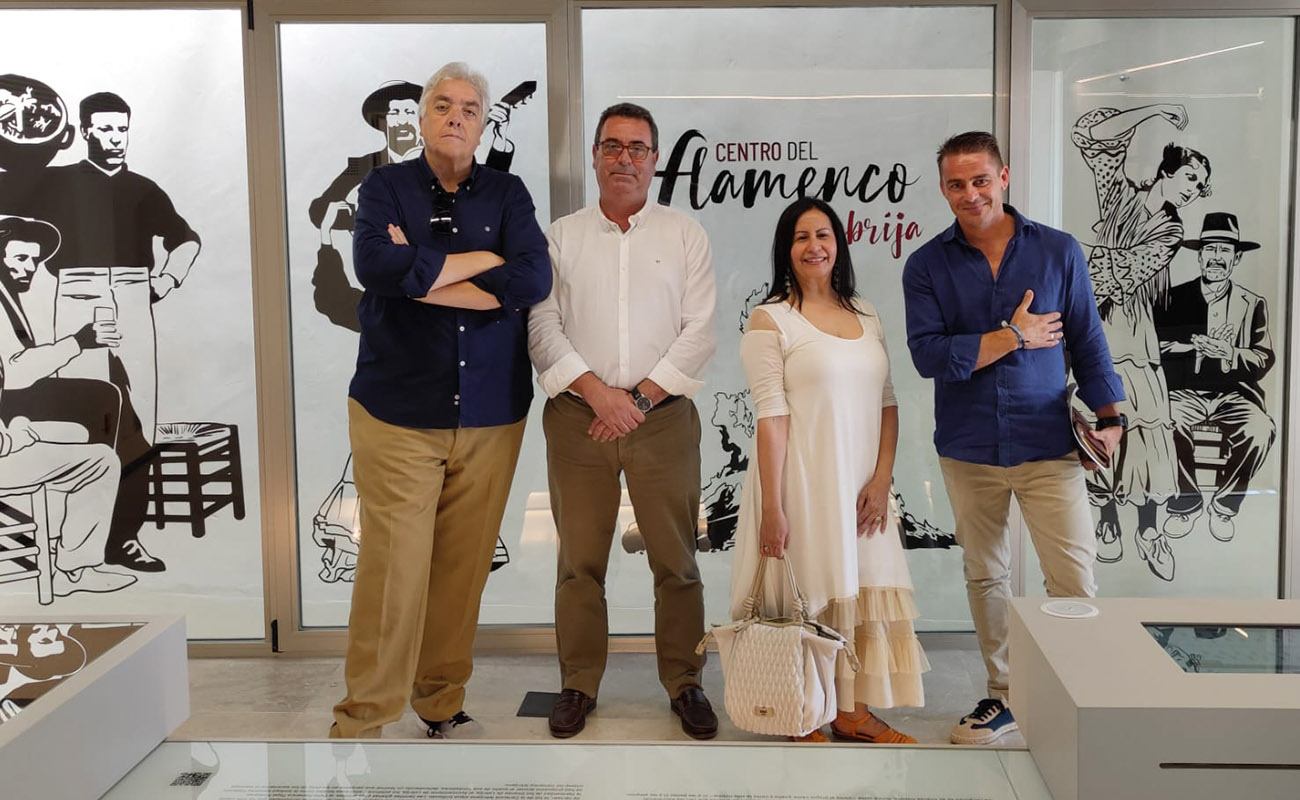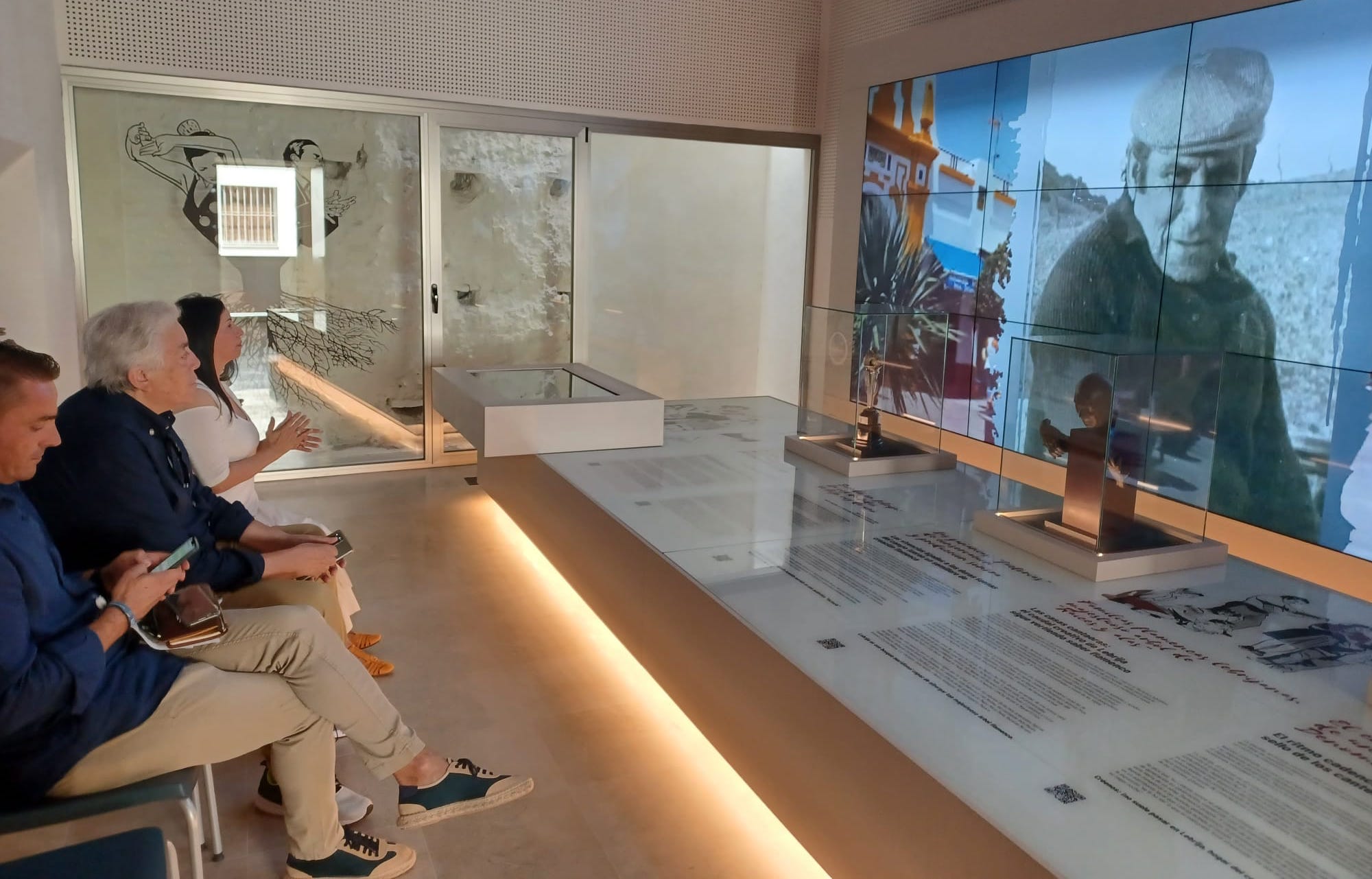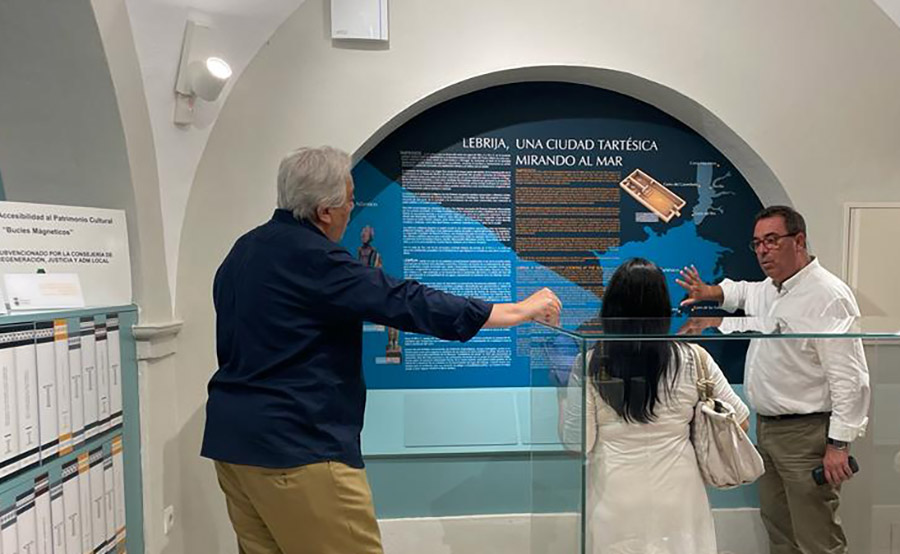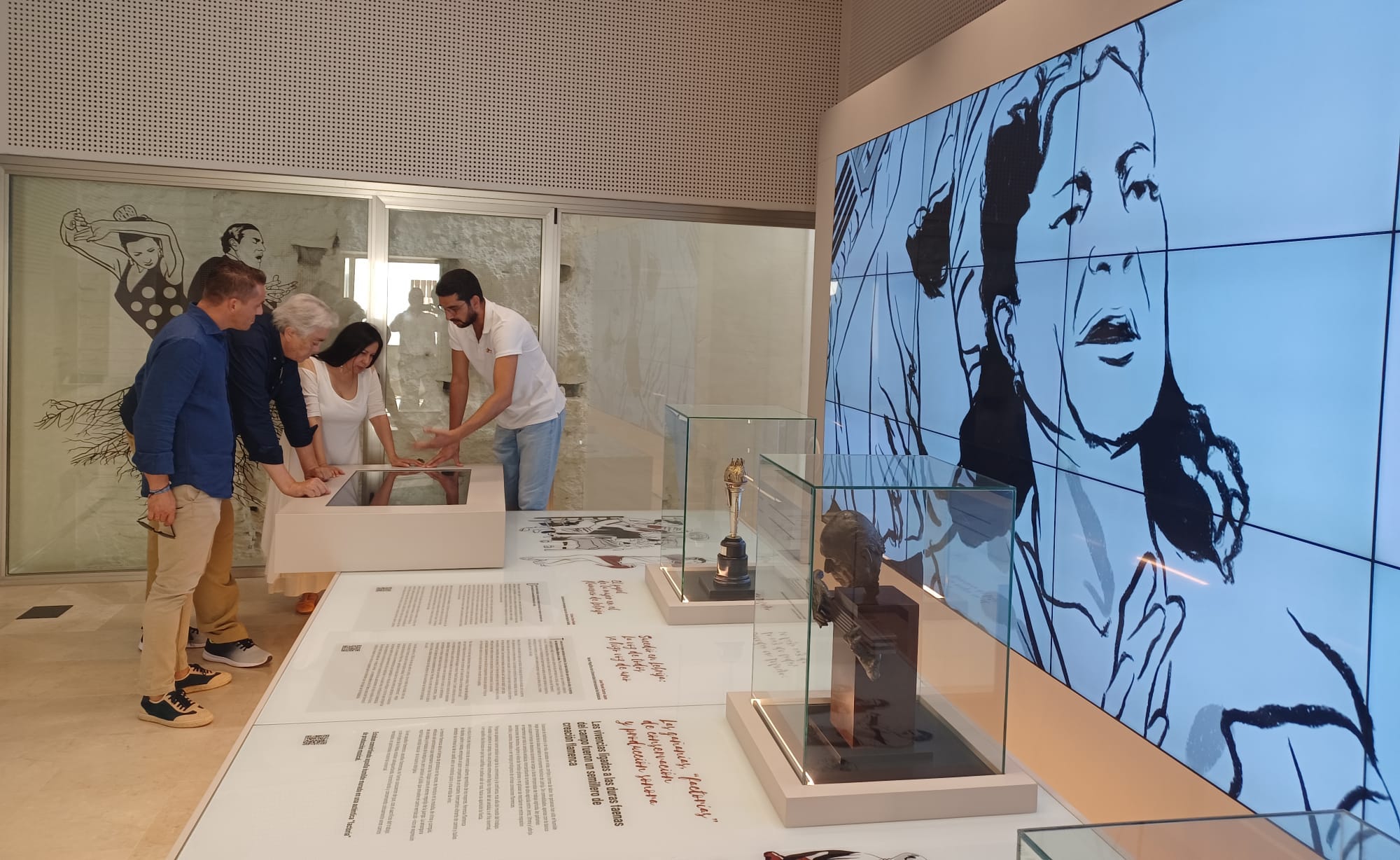Lebrija is well worth the trip
Lebrija's Flamenco Center focuses exclusively on the flamenco legacy of the city. It is elegant and unassuming, with well-documented, basic information. It makes a trip to Lebrija well worth it, if only to spend a whole morning visiting it.

Lebrija is perhaps the town in the province of Seville with the strongest flamenco tradition, together with Morón de la Frontera and Utrera. Just upon entering the city, we are greeted at the first roundabout with a bronze statue of flamenco guitarist Pedro Bacán (1951–1997), giant and noble, choking me with emotion and memories. For many decades I have been visiting the hometown of Elio Antonio de Nebrija —the creator of Spanish (Castilian) grammar — and enjoying everything from this town so rich in good things. Thanks to Miguel Ángel Medina Romero, ExpoFlamenco commercial director and a great host, we were invited by Lebrija’s City Hall to visit the Lebrija’s Flamenco Center, where we were guided by the very kind and knowledgeable Juan de Dios Doblado Vázquez.
Before visiting the Flamenco Center, the Culture Deputy, Pepe Martínez, told us about the city’s history, everything about its beginnings going back thousands of years, its Roman ruins, etc., with commendable knowledge and a passion that can only come from a local who loves his city as much as he does. We learned so much from this man, together with Jafelin Palacios, cantaora from Venezuela, Niña de Bolívar, owner of our website, which she created almost eight years ago with her husband, businessman Mitch Helten. Jafelin is a passionate cantaora who adores the artists from Lebrija. We all had a great time, but she was on cloud nine, like a girl who had just been gifted her first pair of flamenco shoes so she could dance to Antonia Pozo’s bulerías romanceadas.
«Lebrija will be one of the towns featuring in our series Mi Pueblo Flamenco. We will do the recording in September, as soon as the local artists and aficionados come back from their holidays or their summer performances. Our visit last Tuesday was just a prelude of what we will experience in September»
Lebrija’s Flamenco Center focuses exclusively on the flamenco legacy of the city. It is elegant and unassuming, with well-documented, basic information. It makes a trip to Lebrija well worth it, if only to spend a whole morning visiting it, to then enjoy good wine at El Chocazo, an obligatory stop that we made as preamble to another, equally interesting, to one of the most flamenco bars in all Spain, El Bocho, where we enjoyed the good local food and a great conversation about flamenco with the president of the Peña Flamenca Pepe Montaraz, the wonderful aficionado Juan García Ruiz. Such moments happen often in Lebrija, where discussions about flamenco are a very special way to understand and experience flamenco culture.
The reason for our visit was that Lebrija will be one of the towns featuring in our series Mi Pueblo Flamenco. We will do the recording in September, as soon as the local artists and aficionados come back from their holidays or their summer performances. Our visit las Tuesday was just a prelude of what we will experience in September, when we will travel back to the birthplace of Diego el Lebrijano, El Chozas, Juan el Lebrijano, Curro Malena, Pedro Peña, Miguel Funi, Pedro Bacán, Concha Vargas, Inés Bacán and Manuel de Paula. Very few places in the world can boast being the birthplace of so many good artists and of such a unique school of cante, with a hallmark style beloved all over the world. Lebrija has its own sound, besides being one of the most beautiful towns in the province of Seville.
Image above: Manuel Bohórquez, Pepe Martínez, Jafelin Palacios and Miguel Ángel Medina, at Lebrija’s Flamenco Center.







